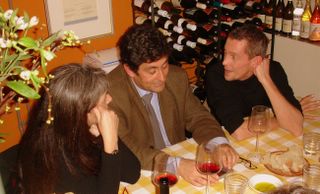In mid December 2004, Ofcom published the first stage of its proposals for the development of a new framework for commercial radio in the UK. The proposals, which draw on dialogue with the radio industry, audience research and financial analysis of the industry, are intended to support moves towards greater choice for listeners and what is termed "less intrusive" regulation of the commercial radio sector.
The review is structured into two main phases. Phase 1, published on December 15th, addresses the immediate priorities required by statute whilst also putting forward for public consultation a number of potential options for the future. Phase 2, which will be published in the spring of 2005, will aim to reach conclusions on a broad number of issues of interest to the radio industry as a whole.
Facilitating the Growth of Digital Radio
Digital radio offers significant benefits to both broadcasters and listeners, including greater choice, enhanced services such as on-screen programme information, ease of use and reduced audio interference. Ofcom is seeking views on a number of potential options for digital radio, including:
* Allocating three more blocks of spectrum in VHF Band III to complete the coverage of DAB local digital radio throughout the UK .
* Proposing to raise the current 20% limit on the use of DAB digital radio multiplexes for non-programme related data such as multimedia downloads. This would require approval from the Secretary of State for Culture, Media and Sport.
* Replacing specific requirements about audio bit-rates for DAB digital radio services with a system of co-regulation to define audio quality standards which meet audience expectation.
Ofcom also seeks the views of industry and the public on the likely demand for additional nationally-allocated spectrum for DAB , whilst recognising Digital One’s investment in digital radio as the current commercial national radio multiplex licensee.
Further Development of Analogue Radio
Ofcom is seeking views on the allocation of 10 medium wave frequencies, each of which could be re-used in more than one area, for new community radio or local/regional commercial services.
The Regulation of Formats and Localness an Analogue Commercial Radio
Ofcom proposes to adopt a less intrusive approach to the regulation of local analogue commercial radio. This would involve a shift away from a focus on the mechanisms by which programming is produced (known as input regulation) and towards a greater focus on the experience of the listener – or output regulation.
Commercial radio stations operate according to an agreed specific format – a formal regulatory document summarising the station’s character of service, key programme promises and target audience. Ofcom proposes to require commercial stations to demonstrate adherence to their specific formats. It also proposes to use its new localness guidance, where appropriate, to regulate the local aspects of a station’s programming.
Ofcom is also considering changing regulation in the following areas, consistent where possible with a greater focus on the quality of the listener's experience and less focus on the detailed means of production:
* Studio Location. Ofcom proposes to relax the requirement for a station’s studios to be located within its Measured Coverage Area (MCA), allowing them instead to be based within the station's wider licensed area.
* Automation: Many stations now use elements of computer-controlled programming, such as music playout systems, voice tracks, drop-ins and commercials, which are played in accordance with a pre-defined schedule and which are not under the direct control of an on-air presenter. Ofcom is seeking views on the removal of all specific limits on the use of automation.
* Networking. This is defined as the transmission of the same programme at the same time across a number of interlinked but separate stations. The review will clarify that Ofcom will allow the networking of programming outside each station's locally-made programming requirements as specified in its respective Format.
* Local News Delivery: Ofcom wants to consider the case for allowing a group of local stations to operate a central news hub, distributing news material from the centre that is of interest to the separate audiences of each station. However, Ofcom also proposes that each station should maintain a local journalistic presence to ensure that the use of news hubs would not be to detrimental to the provision of a high quality local radio news service.
Ofcom proposes to introduce a new system of self-reporting which will require all stations to maintain a file stating the extent to which they have complied with their respective format and localness requirements. The file should be made available to the public on both the station’s website and in hard copy on request. Ofcom will carry out spot checks on compliance and will also investigate complaints from listeners and competitors.
Ofcom Chief Executive Stephen Carter said: "Radio is a dynamic medium at an interesting point of development."
He added: "These proposals seek responses to the prospect of more digital spectrum and a new approach to content regulation."
The closing date for comments on ‘Radio – Preparing for the future’ is 7 March 2005 .

















